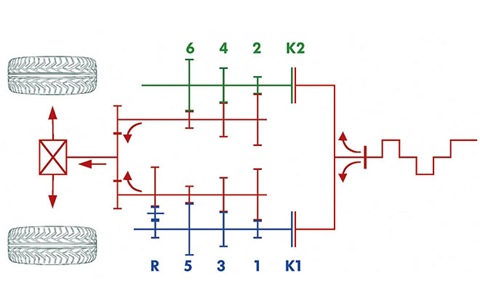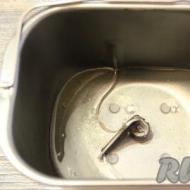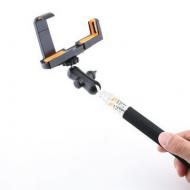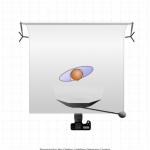
What is a dsg box 7. What is a DSG? Why not buy a car with DSG7?
Many modern cars equipped with a DSG gearbox. It is installed on passenger cars B and C class. It can also be found in cars of class D and above (a six-speed type of product is installed on powerful cars). Therefore, car owners want to know what a DSG transmission is and how it differs from its mechanical and automatic predecessors.
The device and principle of operation of the DSG
The DSG gearbox is a robotic equipment equipped with two clutches and two rows of gears associated with them. This modern device is available in six-speed and seven-speed versions.
DSG Structure
- double clutch;
- main gear;
- two rows of gears;
- differential;
- dual mass flywheel;
- control system.
How the DSG works
This gearbox sequentially includes gears of two rows. That is, when one of the gears is working, the next one is always selected, which means it is ready for use. This scheme of operation ensures switching without breaking the power flow. This greatly enhances the capabilities of the box, compared to its mechanical and automatic counterparts. After all, an engine with such a gearbox does not idle, fuel is consumed much more slowly, and the car receives improved acceleration characteristics.
The device of six-speed and seven-speed DSG
Dual clutch is necessary to transfer torque to two rows of gears. The seven-speed equipment contains two friction clutches. In the six-speed version of the box, the clutch is complemented by a drive plate connected to the flywheel and two friction clutches connected to the gear rows through the main hub. In addition, the seven-speed and six-speed DSG models differ from each other in the type of clutch. The seven-speed uses a dry-type clutch, supplemented by an electric pump. This design of the box allows you to reduce oil consumption and increase engine efficiency. The six-speed DSG uses a wet clutch. It needs a lot of oil, but this principle of operation can significantly increase the life of the equipment.
Each row of gears in the box is a primary and secondary rows equipped with gear blocks. During their operation, the second row controls even gears, and the first row controls odd and reverse gears. The primary shaft in the second row is a hollow device, put on a similar shaft in the first row. In this case, both input shafts are placed coaxially.
The gears of the primary and secondary shafts also have a different principle of operation. Those of them that are on the primary shafts are rigidly connected to the shaft itself. In contrast, the gears on the secondary shafts rotate freely, and between them there are synchronizers that include desired gear. In addition, the DSG gearbox is equipped with a gear reversing on the intermediate shaft. This device is necessary for reverse movement. The secondary shafts also contain the drive gears responsible for the final drive.
Gear shifting and clutch control is controlled by an advanced control system. It consists of:
- An electro-hydraulic unit responsible for the operation of the hydraulic control circuit. This block consists of solenoid valves, multiplexer, control spools and pressure control valves. Solenoid valves are designed for gear shifting. The valve spools are controlled by a special selector lever. Pressure control valves are required for the operation of friction clutches. And the multiplexer controls the gearshift cylinders (8 cylinders in total), using electromagnetic valves for this. Part of the hydraulic cylinders works in the initial position of the multiplexer, and the other part - in its working position. During this process, the same solenoid valves are used.
- An electronic control unit that ensures the operation of the system according to the signals from the sensors.
- Input sensors that control the speed at the output and input of the DSG. Sensors also monitor oil temperature and pressure, and the location of the gear shift forks.
Video about DSG
Pros and cons of DSG
Based on the characteristics discussed above, the pros and cons of the DSG gearbox can be distinguished.
Its advantages include:
- no loss of engine power and its efficiency;
- increased acceleration speed;
- fuel balance (a car equipped with DSG consumes fuel 10% more efficiently than a car with a manual or simple automatic transmission);
- the function of shifting gears in manual and automatic modes (this possibility is not even available in every automatic gearbox).
Among the disadvantages of this gearbox should be highlighted:
- the high cost of the car (compared to cars equipped with conventional gearboxes);
- design complexity, which is badly reflected in the repair of the gearbox (with serious breakdowns you will have to pay a large amount of money for new box gears, since the old one cannot be repaired);
- negative impact on the control system of frequent temperature changes (such changes cannot be avoided when using DSG, so the gearbox fails faster than mechanical or automatic);
- the impossibility of repairing the control system and the need for new expenses for its replacement;
- excessive preselector overheating.
These benefits have made the DSG the most popular transmission in recent years. Therefore, it was equipped with many cars. For example, Audi Q5 and R8, SEAT Ibiza, León and Altea, Škoda Yeti and Octavia, Volkswagen Passat CC, Tiguan and Caddy, as well as many other cars from world famous manufacturers.
It is also worth highlighting the shortcomings inherent only in six-speed or only seven-speed gearboxes. For example, a seven-speed DSG fails faster than a six-speed. This is due to the peculiarities of the operation of the dry type clutch. In addition, in cars equipped with a seven-speed gearbox, jerking may be observed during the transition from first gear to second. However, this drawback is not common to all DSGs and is very rare.
Despite all the shortcomings, the DSG is much more convenient than any of its predecessors. It makes driving easier and improves it specifications. Therefore, feel free to buy a car with this gearbox and do not think about possible problems. With such a modern device, you can determine your driving style and fix it with a selector. By doing this, you will save yourself from further contact with the transmission. But do not forget to control the correctness of its operation and immediately contact the car service if you detect twitches, noises and other signs of equipment failure.
I continue to tell you what and how it works in the car. And today I want to tell you what it is -. This is a development of Volkswagen, which is put on a lot car brands. Such as Volkswagen, Seat, Skoda, Fiat and even some Audi models. So when you read the equipment of a car for all these brands, you can see the abbreviation "DSG", but what do you know? Not! Then read on……..
A DSG gearbox or full Direct Shift Gearbox (synchronous shift gearbox) is a combination of manual and automatic transmissions when an automatic or mechanic is needed. Quite complicated, in the device, but very practical. By the way, this is the first gearbox that uses two clutch discs, due to which the shifting is almost jerk-free and much faster than a classic automatic transmission with a single clutch disc. In addition, along with two clutch discs, there are five shafts in the design. Through these five shafts and two clutch discs, as well as connecting gears, it forms a two-circuit mechanism. Therefore, the car picks up speed as quickly as a manual transmission, and according to the latest test measurements, even much faster. No wonder these boxes are used in all kinds of motorsport competitions, such as rallies. But wait, what about the mechanics, you ask? After all, you wrote that it is combined with mechanics? Yes, indeed, for the first time they began to install the so-called Tiptronic (Manual linear gear shifting), by the way, the Tiptronic control is located not only on the gear lever, but also on the steering wheel of the car, implemented with buttons.
DSG box device


Transmission - designed so that the two shafts are freely located inside. Moreover, they are located on the same axis. The thing is that one shaft is hollow, and the second shaft passes through the first. The first shaft and its group of gears form the first circuit, it switches the second, fourth and sixth gears. The second shaft accordingly creates its own circuit, which is responsible for switching the first, third, fifth and reverse gears. Therefore, the speed of gear shifting is very fast, while one shaft is in first gear, then the second one has already prepared the second gear, and so on. This process is electronically controlled, but with the help of a hydraulic booster.
Now some facts
Turbocharged Volkswagen Golf, With mechanical box transmission accelerates to 100 km/h in 6.6 seconds. The same Golf, but with a DSG gearbox, accelerates in 6.3 seconds, despite the fact that its weight is greater. Also, the consumption of a car with such a transmission is 1.3 liters less. It's worth thinking about. Many manufacturers, including the Japanese, adopted a lot from the Germans, Japanese analogues of DSG boxes appeared much later. No wonder the Germans are called the kings of the automotive industry.
Now a short video of the operation of this gearbox, look
A lot of myths and legends have formed around the DSG gearbox. Motorists somewhere heard about her problems, but they can’t exactly formulate them. Let's try to answer all the typical questions about it.
What is the feature of the DSG box, the principle of operation of the DSG?
DSG is robotic box with two clutches, which allows you to change gears very quickly, due to which the car can accelerate quickly and efficiently. A robot is, structurally, a conventional manual transmission in which automatic transmission switches gears.
How does a regular robot or manual box work? To shift up or down, the driver (or computer) disconnects the clutch disc from the flywheel, engages the desired gear, and reattaches the disc. While the gears are being switched, torque is not transmitted from the engine to the box, and the car loses its dynamics.
In DSG, these pauses are reduced to a minimum: one clutch is responsible for an odd number of gears (1,3,5,7), and the second for an even one (2,4,6). The car starts, and an odd-numbered disk is pressed against the rotating flywheel. The even-numbered disk is open. While the car is accelerating in first, the computer gives the command to turn on the second gear to the even row, and when the moment of switching comes, the odd row disk is disconnected and the even disk is immediately turned on. Accordingly, the even row continues to work, and the odd one switches and prepares to start work.

"Wet" and "dry" versions of the DSG box are used in parallel. More durable DSG6 is able to digest high torque and is put on more powerful cars. DSG7 goes to less powerful versions. DSG under the S-Tronic brand is also installed on Audi cars. An upgraded version of the DSG7 is offered exclusively for this brand, retaining circuit diagram with dry clutches.
What is the difference between DSG6 and DSG7?
DSG is of two types. The first, in 2003, was the six-speed DSG6. The double clutch in it was "wet", that is, it worked in an oil bath. The main disadvantage of the box is significant power loss due to oil. Therefore, in 2008, Volkswagen introduced a new version - DSG7. This box uses a dry clutch. It was this box that became problematic. When choosing a car with DSG, always pay attention to what type is used there - six or seven speed. DSG6 can be taken without a doubt, but DSG7 is better left to those who are not well versed in technology.
Car models released with a problematic DSG7 box and alternatives with DSG6 and other automatic transmissions?
For convenience, we have collected all models of the Volkswagen concern in one table.
Special attention: Skoda Octavia with DSG7, VW Golf with DSG7, Audi A3 2014 with DSG7
 |
 |
 |
 |
|
Year of production |
Engines with DSG7 |
Alternative |
|
|
AUDI with DSG7 |
|||
|
1.8 (180) 6MT and DSG6 |
|||
|
1.4 (125) 6MT and DSG6 1.8 (160) 6MT and DSG6 2.0 (200) 6MT and DSG6 3.2 (250) 6MT and DSG6 |
|||
|
1.8 (120) 6MT and CVT 1.8 (170) 6MT and CVT 2.0 (225) 6MT and CVT |
|||
|
1.8 (120) 6MT and CVT 1.8 (160) 6MT and CVT 2.0 (180) 6MT and CVT 2.0d (143) 6MT and CVT 3.2 (265) 6MT, 6AT and CVT |
|||
|
1.8 (170) 6MT and CVT 2.0 (225) 6MT and CVT |
|||
|
1.8 (160) 6MT and CVT 2.0 (180) 6MT and CVT 2.0 (211) 6MT and CVT 3.2 (265) 6MT, 6AT and CVT |
|||
|
2.0 (180) 6MT and CVT 2.8 (204) 6MT and CVT |
|||
|
2.0 (211) 6MT and 8AT |
|||
|
SEAT with DSG7 |
|||
|
SKODA with DSG7 |
|||
|
2.0 (150) 6MT and 6AT 2.0d (140) 6MT and DSG6 1.8 (152) 6MT and 6AT 1.6 (102) 5MT and 6AT 1.9 (105) 5MT and 6AT 1.6 (115) 5MT and 6AT |
|||
|
1.8 (152) 6MT and 6AT 2.0d (170) 6MT and DSG6 |
|||
|
1.8 (152) 6MT and DSG6 |
|||
|
VOLKSWAGEN, VW DSG7 |
|||
|
Volkswagen Polo (hatch) |
|||
|
Volkswagen Jetta |
1.6 (105) 5MT and 6AT |
||
|
1.9d (105) 5MT and DSG6 |
|||
|
Volkswagen Touran |
2.0d (110) 6MT and DSG6 |
||
|
Volkswagen New Beetle |
|||
|
Volkswagen Passat |
2.0 (210) 6MT and DSG6 |
||
|
2.0 (150) 6MT and 6AT 2.0 (200) 6MT and 6AT |
|||
|
Volkswagen Passat CC |
|||
|
Volkswagen Sharan |
|||
|
Volkswagen Scirocco |
2.0 (210) 6MT and DSG6 |
||
|
Volkswagen Tiguan |
1.4 (150) 6MT and DSG6 |
||
|
Volkswagen Caddy |
2.0d (140) 6MT and DSG6 |
||
What malfunctions and problems are typical for DSG?
The most common is jolts when shifting gears. Clutch discs close too abruptly, causing the car to twitch. Other symptoms also occur: clanging, grinding, jolts and loss of traction in motion. The latter is especially dangerous if the car at the time of failure of traction is in the process of overtaking in the oncoming lane.
As Peter AT explained to us, the main problem with the DSG box is a dry clutch. It is subject to accelerated wear, and the root of the problem is in the incorrect algorithms of the mechatronic unit that controls the operation of the box. There are, of course, other malfunctions: occasionally the shaft bushings and the clutch release fork wear out, the contacts of the solenoids move away, dirt sticks to the sensors, antifreeze gets into the oil ... But these cases are exotic.

The main thing you need to know: if you still bought a post-warranty car with a DSG7, and the box shows symptoms of a malfunction, this is not a reason to change it as an assembly. The gearbox itself, that is, a set of gears, almost never fails. The box can be repaired, which will cost an order of magnitude cheaper than replacing. True, spare parts will have to wait for several weeks - the demand for them is still small, and the sellers of spare parts do not have stocks.
What is the manufacturer's warranty for the DSG box, free DSG repair and replacement?
Perhaps, in this case, it would be logical to quote verbatim a letter from Volkswagen Group Rus to the heads of dealer service departments. “We hereby inform you about the current rules for handling customer claims for possible malfunctions in the operation of the DSG7 gearbox. VOLKSWAGEN Group Rus LLC, meeting the wishes of customers, in order to maintain confidence in the cars of the concern, as part of an additional obligation, provides customer support in case of revealing a factory defect in the operation of the DSG 7 gearbox until the expiration of 5 (five) years or until reaching 150,000 km of run (whichever comes first) from the time the vehicle was handed over to the first purchaser. Support is provided in the form of elimination of deficiencies free of charge for the client by repairing or replacing individual components of the gearbox or the complete unit.

Sometimes dealers try to refuse warranty repairs to customers, referring to the fact that they underwent maintenance at unauthorized stations. By law, this cannot be a reason for refusal.
If you have a car that is under 5 years old and has less than 150,000 kilometers on it, and the dealer refuses to repair the DSG7 free of charge, complain directly to the Volkswagen hotline.
Also, do not succumb to the persuasion of dealers to go through some scheduled maintenance DSG. The fact is that this is a maintenance-free box, and scheduled maintenance is a way to make money on narrow-minded customers.
Is it true that Volkswagen has eliminated all problems with the DSG box?
The fact that engineers are working on upgrading the DSG is a fact. The software and details of the clutch assembly are being improved. However, it is impossible to reliably say that the problem of accelerated wear has been solved. The problem is that the Volkswagen concern prefers to pursue a closed policy, and publishes official information about how the box is being finalized. And although the 5-year warranty on the DSG is no longer covered since 2014, there is no reason to say that the reliability problem has been solved.
Why continue to produce cars with DSG7?
The official position of the company is as follows: the box provides excellent acceleration dynamics and economy. Questions about reliability are simply ignored by the Germans. Further, we can only assume that the reason lies in the usual business calculation. The development of a gearbox costs billions of euros, and it cannot be abandoned just like that. Obviously, Volkswagen thought it was easier to spend money on warranty repair and spread rumors about the increased reliability of the DSG7, than urgently transfer all their cars to the DSG6, "automatic".

What should a simple motorist who wants to buy a Volkswagen, Skoda or Audi do in this situation?
Choose a modification equipped with any other box, except for DSG7. True, unfortunately, Golf is offered today only with it, or with mechanics. At Skoda Octavia there are modifications with DSG6, though only diesel ones. At Polo sedan and Tiguan there are versions with a traditional 6-speed automatic. In general, there is a choice, although it is narrowing.
Why not buy a car with DSG7?
First, because no matter what positive traits boxes, it makes no sense to play the lottery and hope that you will get a car that will not twitch when shifting gears and in which the box will not “get up” after 50 thousand mileage.

Secondly, because cars with DSG7 do not sell well in the secondary market. People who buy used cars tend to be more knowledgeable on average technical features than fans of new cars from the salon. Most of them are well aware of the problems with the seven-speed robot, and they rightly do not want to mess with them. Of course, you can always return the car in trade-in, but with a very big discount, since the salon managers are also in the know.
In any case, the owner of a car with a DSG7 will face problems and financial losses. Whether they are worth the pleasure of driving a Volkswagen, Skoda or Audi, everyone decides for himself.
When will the DSG7 be discontinued?
Volkswagen doesn't talk about it. There are fears that the box will live on the conveyor for a long time, since the DSG6 has been used since 2003. There are also examples of the long life of frankly unsuccessful nodes. For example, the French 4-speed automatic DP0 and its numerous derivatives: DP1, DP2, AL4, which do not tolerate overheating and are distinguished by a rare "dullness" in motion. It has been used with various modifications since the early 90s, and is still put on Renault Sandero, Duster, Nissan Almera and even the relatively expensive Peugeot 408.

Unfortunately for motorists, now manufacturers generally care very little about the reliability of cars. The main vector of their development now is ecology. In order to save one hundred grams of gasoline per 100 kilometers, various dubious technologies are being introduced, often reducing the overall life of the car, such as direct injection, increasing the turbo boost pressure or the compression ratio in the cylinders.
Gearboxes - relatively dead end branch development, and DSG, paradoxically, is now at the top of progress, as it provides efficiency (and therefore the desired environmental friendliness). The fact that the unit "lives" an average of 150 thousand kilometers is of little interest to anyone. Producers are generally not interested in the existence secondary market- they dream of people buying only new cars, and throwing old ones in the trash.
Therefore, sadly, but with DSG7 we have every chance to live another 5-10 years without any changes. And everyone will continue to pretend that this is how it should be.
The DSG (Direct Shift Gearbox) transmission is a hybrid of a manual and automatic transmission. In a nutshell, the driver changes gears manually, but the whole process is carried out through electronics and various automatic mechanisms.
By introducing DSG into its models, Volkswagen AG was the first to launch this type of transmission into mass production. The main feature of the DGS gearbox: it has 5 shafts, which, together with gears and two (!) Clutches, form a two-circuit torque transmission mechanism. Therefore, cars with DSG transmission pick up speed just as quickly and reach the same top speed as cars with manual gearboxes. Gearshifts are as quick and seamless as today's automatic transmissions, which is why these gearboxes have long been used in sports cars where every second counts. Gears on the DSG transmission can also be switched manually: for this, the Tiptronic system or a manipulator on the steering wheel is used.
The DSG transmission contains five shafts instead of the usual two or three, and two multi-plate clutches are used to transmit torque. When one clutch is closed and one gear is engaged, at the same time the gears of the other gear are already engaged, it remains only to close the second clutch. Having received a command from the Mechatronic control panel, the mechanism instantly disengages the first clutch and closes the second, at the same time shifting into another gear.
How is the DSG system designed? To arrange two intermediate shafts on the same axis as the base, one of them is made hollow, and the second passes through the first. The outer shaft and gears are connected to two secondary (output) shafts and form the first circuit, "responsible" for the inclusion of the second, fourth and sixth gears. The inner shaft is connected to two other secondary shafts, on which pairs of gears of the first, third, fifth and reverse gears are mounted. The gear is engaged by means of a synchronizer and a clutch, and this process is controlled electronically using a hydraulic booster.
Paradoxical but true: cars with DSG transmission accelerate faster cars with manual gearbox. For example, the Golf R32 model with this gearbox accelerates from 0 to 100 km / h in 6.4 seconds, and with a manual gearbox in 6.6 seconds. Max Speed both models are often the same - 247 km / h, but the most impressive DSG effect is visible in the level of fuel consumption: a Golf R32 with such a gearbox consumes an average of 10.2 liters of gasoline per 100 km, or 1.3 liters less than the same car with a manual gearbox. N
DSG gearboxes are manufactured at Volkswagen AG's plant in Kassel, Germany, where the concern recently invested 150 million euros to restore the production line. The plant plans to produce up to 1,000 gearboxes of this type per day.

Among motorists, one can often hear disputes and arguments about the features and disadvantages of gearboxes, for example, we read an article about an automatic machine or a mechanic.
For the most part, this concerns the fundamental difference, efficiency and comfort between a manual and automatic transmission. In the meantime, while potential buyers are arguing, automakers are working and have already succeeded in many ways with better mechanisms for transferring engine power to the drive wheels.
One of these technological innovations is the brainchild of the Volkswagen AG concern - the DSG gearbox (Direct-Shift Gearbox). For the first time, a “charged” version of the Golf R32 was equipped with such a box in 2003. Well, the fundamental features of this novelty were born even in the racing past of the company, in the car of Walter Röhrl, the legendary version of the 1985 Audi Sport quattro. What is so interesting and innovative about this gearbox, let's look further.
The principle of operation of the Direct-Shift Gearbox.
Technologically, the DSG gearbox is for the most part an advanced manual gearbox and has many borrowed elements: input and output shafts, synchronizers, clutch. However, this is where the differences end. First of all, the DSG gearbox relieved the driver of the need to squeeze the clutch with mechanical movements. This work in this box was replaced by smart electronics, which itself connects gears depending on the selected mode.
 Working in the "automatic" mode, the gearbox, depending on the operation of the engine, includes the necessary gear, thereby simulating the operation of the familiar automatic transmission.
Working in the "automatic" mode, the gearbox, depending on the operation of the engine, includes the necessary gear, thereby simulating the operation of the familiar automatic transmission.
When operating in manual gear selection mode, the driver shifts gears with a pedal located under the steering wheel, or a standard lever, moving it up or down, depending on the need to up or down a gear. But such a shift does not have direct mechanical contact with the gearbox, by moving the lever or pedal, the car owner only sends a command to the control unit about the need to turn on one or another gear, and the process itself takes place through controlled servo drives.
The above features of robotic gear shifting are just one of the features this mechanism. The main technological improvement of the DSG gearbox is shift timing, which is achieved by having two separate shafts for odd and even gears, each shaft having its own clutch. When shifting gears in the operation of one shaft, the gear is shifted on the other shaft, while the clutch remains disengaged, after which the clutches are switched, one of which activates the second shaft and disables the first. This achieves a significant smoothness of gear shifting and best gear torque. At the same time, the gearbox remains at the level of “mechanics” in terms of speed, but at the same time we get the smooth operation and the ability to automatically shift, inherent in automatic transmissions.
Gearbox benefits.
The advantages of the DSG transmission include better shift dynamics and fuel efficiency due to more efficient shifting. It is also interesting that, with a slight lag behind the switching speed of a mechanical colleague, this gearbox showed best performance in acceleration of the same Golf R32 to 100 km / h, showing a time of 6.4 seconds, which is 0.2 seconds less than the equivalent with a manual transmission.
Gearbox cons.
The disadvantages of the DSG gearbox include, first of all, its price, which is on average $ 2,000 more expensive, and the high cost of servicing such a gearbox, while not every workshop will undertake such work. Yes, and besides, such a box, due to its complexity, is considered completely unrepairable and requires its complete replacement in case of failure.
To be honest, these disadvantages are very subjective, which will disappear with an increase in the number of cars with DSG gearboxes: the cost of such gearboxes will decrease, the number of services capable of servicing it will increase, and an increase in the number of services, according to the laws of the market, will also reduce the cost of maintenance. As a result, this kind of gearboxes will enter our lives along with the existing mechanical and automatic boxes gear shifting.
















